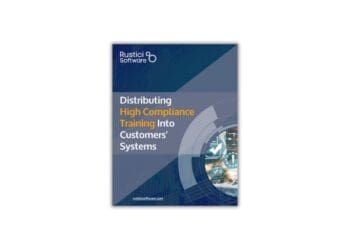Engaging Training for Workplace Safety
Given the recent prevalence of gun violence, businesses and organizations should conduct training and practice emergency response procedures for an active shooter with the same frequency as fire drills or other emergencies. Compliance training should be engaging, and emergency procedures need to be second nature so that staff are equipped to respond effectively under stress.
According to Maslow’s Hierarchy of Needs, safety is at the bottom of the pyramid; it’s seen as a basic, standard need for every individual. More recently, however, it appears that safety has been compromised with active shooter situations across the United States and is continuously appearing across the news headlines. In fact, recent FBI data shows a dramatic increase in annual active shooter incidents, with 250 incidents occurring from 2000 to 2017. Moreover, according to the FBI, seven out of 10 active shootings take place in schools and businesses. These sobering statistics serve as proof points for why education institutions and businesses must be proactive and prepared for potential active shooter situations.
While the debate rages about what needs to be done at a macro level, I urge leaders across varying industries to work together to find common ground and take action – and to remember that even small steps eventually lead to significant changes. In the learning and development (L&D) industry, compliance training has always had the mission of keeping people safe, and part of that is helping your employees know what to do in the event of an emergency.
While it is never pleasant to think about worst-case scenarios, it is imperative that all businesses and organizations have an emergency action plan (EAP) in place. An EAP not only outlines the responsibilities and what to do in a high-stress situation, but also results in faster response times and gives employees a level of security because they know what to do and how to respond. Most employers have an EAP to cover fires, earthquakes and tornados, but few employers consider what to do if there is a violent attacker or active shooter in the office.
Given the recent occurrences and staggering statistics, businesses and organizations should conduct training and practice emergency response procedures for an active shooter with the same frequency as fire drills or other emergencies. The Department of Homeland Security (DHS) offers multiple resources, helpful tips and information about developing an active shooter component to your EAP, and I strongly encourage every organization and business to review their content. Another immediate action businesses can take is to evaluate the existing compliance training program. When doing so, it’s important to ask:
- Do my members/employees feel prepared for unexpected dangerous situations?
- Are my members/employees aware of the trainings we have offered?
- Are trainings regularly updated, engaging and customizable to my specific business needs?
If the answer to any of these questions is no, perhaps a new compliance training session is in order. By investing in effective training that is reinforced by practice and drills, organizations can make a difference and potentially save lives. In order for the training to be effective, it’s vital that the content is rich and engaging. If it does not capture the learner’s attention, they will not remember what their role is should a dangerous event occur, and the panic and stress of the unknown could cause more harm than good. Active shooter incidences are unpredictable and evolve very quickly – you can’t train for every possible scenario. However, there are general actions that can be taken when confronted by an active shooter crisis.
From working with many organizations with Skillsoft’s active shooter safety training, there is a common three-tiered approach that continues to “stick.” This approach includes: escape, hide and neutralize.
- “Escape” can be distilled down to knowing the safest way to leave the building without coming into contact with the attacker.
- For the “hide” step, you must know the difference between concealment and cover. Concealment only hides a person from the sight of the attacker, while cover has the ability to stop a live round. A desk would function as concealment, and a file cabinet full of papers may be considered cover.
- “Neutralize” should always be a last-resort option. However, if you must engage with your attacker, it must be done with determination. Your goal is to “stop the threat.”
The truth is, despite the alarming frequency of these tragedies, many of us are, fortunately, still unused to facing such danger and can (when in the situation) become paralyzed with fear. Recognizing potential workplace violence indications, knowing the basic response actions and conducting practice sessions on how to respond can help alleviate this fear and demonstrate in a practical way the best place to hide and the fastest escape route. Emergency procedures need to be second nature in order to control our natural reaction of stress when facing a crisis.



 John Arendes is the Vice President and GM Global Compliance Solutions at Skillsoft. John is responsible for the leading the direction of Skillsoft’s Global Compliance solutions, ensuring the company’s compliance programs have a multinational impact on organizations. John works closely with many clients in identifying best practices for successful compliance training programs. John’s experience crosses multiple verticals in dealing with compliance training. Prior to joining Skillsoft, John was Head of Compliance Learning, North America for Thomson Reuters.
John Arendes is the Vice President and GM Global Compliance Solutions at Skillsoft. John is responsible for the leading the direction of Skillsoft’s Global Compliance solutions, ensuring the company’s compliance programs have a multinational impact on organizations. John works closely with many clients in identifying best practices for successful compliance training programs. John’s experience crosses multiple verticals in dealing with compliance training. Prior to joining Skillsoft, John was Head of Compliance Learning, North America for Thomson Reuters.









